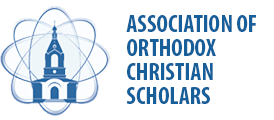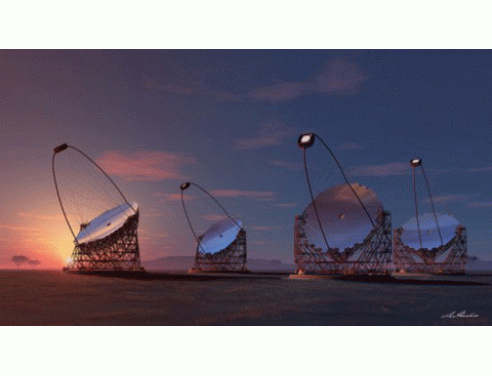12
MaySpain and Japan agree on the installation of four new telescopes on the island of La Palma
The telescopes, with participation of the UAB, IFAE and IEEC, will form part of the future Cherenkov Telescope Array in the Northern Hemisphere (CTA-North) at the Roque de los Muchachos Observatory.
On 13 April the acting Secretary of State for R+D+i Carmen Vela, together with the Japanese Deputy Minister of Education, Culture, Sport, Science and Technology Tsutomu Tomioka, presided over the signing of the collaborative agreement for the installation and operation of four Cherenkov telescopes at the Roque de los Muchachos Observatory on the Island of La Palma. The agreement was signed in Tokyo by Rafael Rebolo, Director of the Instituto de Astrofísica de Canarias (IAC) and Takaaki Kajita, Director of the Institute for Cosmic Ray Research (ICRR) of the University of Tokyo.
Several Catalan institutions play an important role in the management of the CTA project and in the technological development of the four largest telescopes, known as LSTs (Large Size Telescopes), together with the group of researchers who are also founding members of the project.
The group of the Institute of Space Sciences (IEEC-CSIC) led by ICREA research professor and director of the unit, Diego F. Torres, and Ramon y Cajal researcher Emma de Oña Wilhelmi, acted as scientific director and is responsible for developing one of the major software modules which control the observatory. The group of the Institute of Cosmos Sciences (IEEC-UB), led by the professor and scientific director of ICCUB, Josep Maria Paredes, and the aggregate professor Marc Ribo, participated in the definition of scientific objectives and are involved in the design and production of microelectronics for CTA cameras.
The group of the Centre for Studies and Space Research (IEEC-UAB) led by Lluís Font, professor in the Department of Physics at UAB, and Markus Gaug, postdoctoral researcher, coordinates the group of central calibration facilities, including calibration the individual telescopes, network of telescopes, the atmosphere, and of the precision in pointing to the sources; and participates together with the Institute for High Energy Physics (IFAE) in the development of advanced instrumentation for the characterisation of the atmosphere.
The IFAE is responsible for the coordination, control and assembly of the LST camera as well as for the design and assembly of the mechanical system which rotates the telescopes and anchors them to the ground. Among IFAE researchers participating in the project are Manel Martínez, coordinator of CTA Spain and chair of the LST steering committee, and Juan Cortina, co-lead researcher of the LST. Both were present at the signing of the agreement. Òscar Blanch is coordinator of the LST cameras, Abelardo Moralejo is coordinator of Software and Javier Rico is Chair of the Committee of Publications and Scientific Communications.
About CTA
The CTA consortium is made up by over 1,200 scientists working in 200 research centres in 32 countries. Spain and Japan are the two major contributors to CTA-North. The objective of the consortium is to build a telescopic array for the detection of extremely high energy gamma rays which yield information about the most violent extreme events occurring in the universe.
The Ministry of Economy and Competitivity has added its major financial effort to those of other international and national entities to bring the CTA-North to Spain, providing a fund of 40 million euros, which is half the total construction cost.
The CTA is formed by two observatories, one in the northern and the other in the southern hemisphere. The total array will be made up of 120 telescopes, distributed between the two. The CTA-North observatory will be sited at the Roque de los Muchachos Observatory on the Island of La Palma, while CTA-South will be at the Observatory of the European Southern Observatory (ESO), at Cerro Paranal, Chile.
Several Catalan institutions play an important role in the management of the CTA project and in the technological development of the four largest telescopes, known as LSTs (Large Size Telescopes), together with the group of researchers who are also founding members of the project.
The group of the Centre for Studies and Space Research (IEEC-UAB) led by Lluís Font, professor in the Department of Physics at UAB, and Markus Gaug, postdoctoral researcher, coordinates the group of central calibration facilities, including calibration the individual telescopes, network of telescopes, the atmosphere, and of the precision in pointing to the sources; and participates together with the Institute for High Energy Physics (IFAE) in the development of advanced instrumentation for the characterisation of the atmosphere.
The IFAE is responsible for the coordination, control and assembly of the LST camera as well as for the design and assembly of the mechanical system which rotates the telescopes and anchors them to the ground. Among IFAE researchers participating in the project are Manel Martínez, coordinator of CTA Spain and chair of the LST steering committee, and Juan Cortina, co-lead researcher of the LST. Both were present at the signing of the agreement. Òscar Blanch is coordinator of the LST cameras, Abelardo Moralejo is coordinator of Software and Javier Rico is Chair of the Committee of Publications and Scientific Communications.
About CTA
The CTA consortium is made up by over 1,200 scientists working in 200 research centres in 32 countries. Spain and Japan are the two major contributors to CTA-North. The objective of the consortium is to build a telescopic array for the detection of extremely high energy gamma rays which yield information about the most violent extreme events occurring in the universe.
The Ministry of Economy and Competitivity has added its major financial effort to those of other international and national entities to bring the CTA-North to Spain, providing a fund of 40 million euros, which is half the total construction cost.
The CTA is formed by two observatories, one in the northern and the other in the southern hemisphere. The total array will be made up of 120 telescopes, distributed between the two. The CTA-North observatory will be sited at the Roque de los Muchachos Observatory on the Island of La Palma, while CTA-South will be at the Observatory of the European Southern Observatory (ESO), at Cerro Paranal, Chile.

